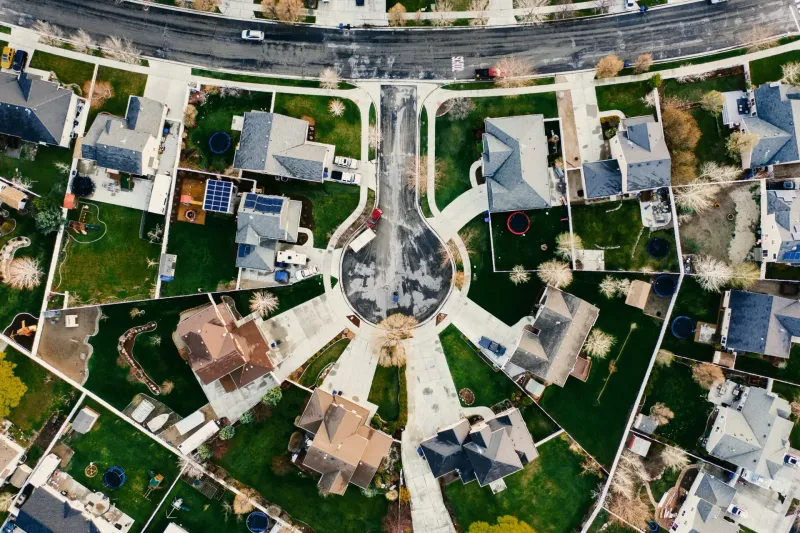In the world of architecture, misconceptions abound. These myths often shape perceptions and expectations, sometimes leading to confusion.
This article aims to shed light on 9 common myths in architecture and provide clarity. Whether you are a budding architect or simply interested in the field, understanding these myths is crucial.
Let’s explore the truths behind these common misconceptions and appreciate the nuances of architectural practice.
From design principles to construction realities, get ready to enhance your knowledge and appreciation of architecture.
1. Myth 1: Architects Just Draw

Many think architects only draw buildings, but their role extends far beyond. They consider functionality, aesthetics, and sustainability, ensuring designs meet client needs.
Architects liaise with engineers, contractors, and clients, balancing different perspectives. They also consider legal regulations and environmental factors, ensuring compliance.
Their work involves problem-solving and innovation, crafting spaces that inspire and function.
Understanding this broad role helps appreciate the complexity and creativity involved.
2. Myth 2: Modern Architecture is Cold

Modern architecture often faces criticism for being cold or impersonal. However, many modern designs focus on warmth and connection to nature.
Architects use elements like natural light, green spaces, and organic materials to create inviting environments. These designs promote well-being and comfort.
Understanding modern architecture’s emphasis on human-centered design reveals the warmth and innovation embedded in contemporary spaces.
3. Myth 3: Architects Are Expensive

Hiring an architect is often seen as costly, but they can actually save money by optimizing resources and planning effectively.
Architects help avoid costly mistakes and ensure a project aligns with a client’s budget. They bring expertise in cost-effective materials and methods.
Understanding the value architects provide can dispel the myth of excessive expense, highlighting their role in achieving efficient and affordable results.
4. Myth 4: Architecture Is Only About Buildings

Architecture encompasses more than just buildings. It includes the design of environments, landscapes, and even urban planning.
This field shapes how people interact with spaces, influencing daily experiences and community dynamics. Architects design parks, public spaces, and urban layouts.
Recognizing these diverse contributions helps appreciate architecture’s impact on society and the environment, beyond merely constructing buildings.
5. Myth 5: Traditional Designs Are Outdated

Traditional designs are often viewed as outdated, yet they offer timeless beauty and cultural significance. Modern architects integrate these elements with contemporary needs.
By blending the past and present, architects preserve heritage while meeting modern demands. This fusion creates spaces with charm and relevance.
Understanding this synergy helps dispel misconceptions about traditional architecture, showcasing its enduring value.
6. Myth 6: Architects Control Everything

A common misconception is that architects control every aspect of a project. In reality, they collaborate with many professionals.
Architects work with engineers, contractors, and clients, ensuring all perspectives are considered. They lead but do not control every detail.
Recognizing this collaborative effort highlights the teamwork necessary to transform architectural visions into reality.
7. Myth 7: Architecture is a Solo Endeavor

Many perceive architecture as a solitary pursuit, yet it thrives on collaboration. Architects work in teams, exchanging ideas and expertise.
This teamwork fuels creativity and innovation, leading to more holistic designs. Different perspectives contribute to well-rounded and effective solutions.
Recognizing architecture as a collaborative art dispels the myth of solitude, emphasizing the power of teamwork.
8. Myth 8: Architects Only Design New Structures

While architects design new structures, they also renovate and restore existing ones. This work preserves history and adapts to current needs.
Renovation involves creativity and respect for original designs, merging past and present. Architects enhance functionality while maintaining character.
Understanding this aspect highlights the diverse roles architects play, beyond simply creating new buildings.
9. Myth 9: Architecture is All About Looks

Aesthetics play a role in architecture, but functionality and sustainability are equally vital. Architects design spaces that are beautiful, efficient, and eco-friendly.
Balancing these elements ensures buildings serve their purpose effectively while minimizing environmental impact. Good design is more than skin deep.
Understanding this balance dispels the myth that architecture is only about appearance, revealing its broader significance.

